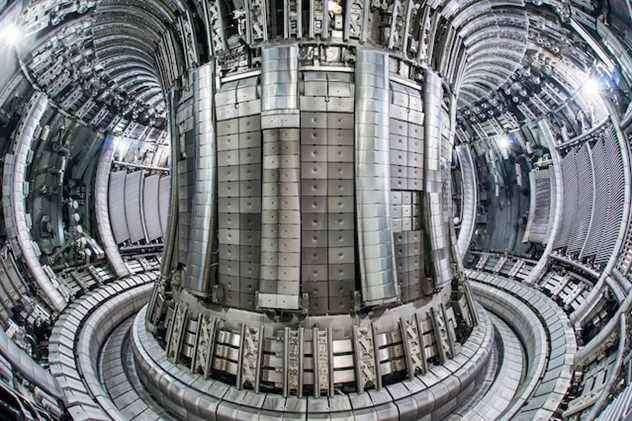Posted at 7:00 a.m.
Three times more energy
On 21 December last, the European Common Torus (JET) – an experimental fusion reactor located near Oxford – broke its own 1997 record by producing 20 kilowatt hours of energy for five seconds, almost three times as much energy. “It’s always very interesting to see the progress in fusion and the media interest,” comments Émile Knystautas, a physicist at Laval University who worked on similar reactors early in his career. The announcement of this record on Wednesday comes as JET is nearing the end of its career, after 40 years of loyal service.
an old dream
Nuclear fusion is a dream of physicists because it does not produce nuclear waste, unlike current nuclear reactors, which are based on the fission of atomic nuclei, not their fusion. “When I started, we were talking about achieving fusion in 50 years,” says Knystautas. Now, we are talking more about 60 years. So the goal moves away instead of coming closer. In 1976, a US government report estimated that commercial nuclear fusion could become a reality… in 1990. The first fusion reactors were designed in the 1950s, notably by the Russian Andrei Sakharov, who was to become a famous dissident.

PHOTO FROM THE ITER WEBSITE
Construction work for the International Thermonuclear Experimental Reactor (ITER) in Aix-en-Provence, France
ITER
The next step in fusion research is the commissioning of the International Thermonuclear Experimental Reactor (ITER), under construction near Aix-en-Provence. Its opening, which has been postponed several times, should take place in 2025. “With ITER, we think we can finally produce more energy than we put into the reactor,” explains Mr. Knystautas. With the JET, fusion gave only 30% of the energy supplied to the reactor. The production record for a fusion reactor is 70% of the energy supplied to the reactor. The goal of ITER is to produce 10 times more energy than what will be supplied to the reactor, in particular by controlling the extreme temperatures generated by fusion in a different way. “But we are only going to have these 10 times more energy for 300 seconds, notes Mr. Knystautas. Afterwards, it will have to be able to operate continuously, which poses all sorts of engineering problems, in particular for the durability of the walls of the reactor. The ITER, whose budget is 20 billion euros, aims to achieve its goal in 2035.
Overall efficiency
Also, the efficiency figures don’t take into account the energy needed to operate the systems that keep the reactor running, notes Knystautas. If we take this “overall efficiency” into account, the efficiency of current reactors is actually five to six times less.

PHOTO LEON NEAL, AGENCE FRANCE-PRESSE ARCHIVES
Bill Gates
Bill Gates
Glimmer of hope, several private groups, one of which is financed by Bill Gates and Jeff Bezos, are working in the United States on nuclear fusion projects. The magazine Forbes recently calculated that these projects, with in the foreground the company Helion, which has already tested half a dozen fusion reactors, had received more than 3 billion US in private financing in 2021.
Climatic changes
JET officials warned the media that nuclear fusion would not make it possible in the short or even medium term to deal with the problem of climate change. In Scotland, regional government support for nuclear fusion projects has even been criticized by environmental groups, who instead want support for conventional renewable energy to get faster results.
Learn more
-
- 60 meganewtons
- Power of the magnets of the future International Thermonuclear Experimental Reactor (ITER), i.e. 60 million times Earth’s gravity

